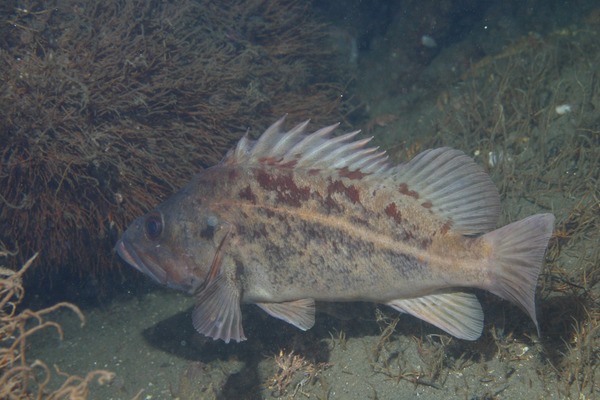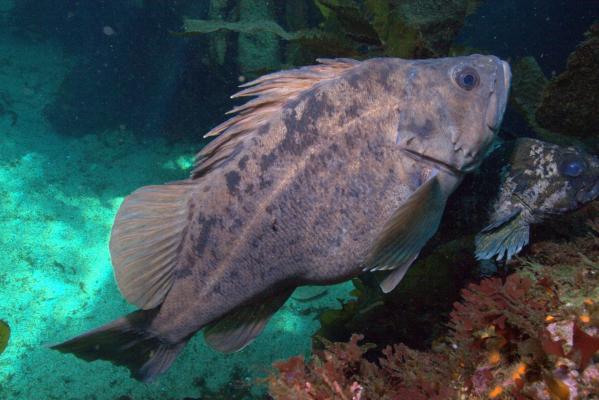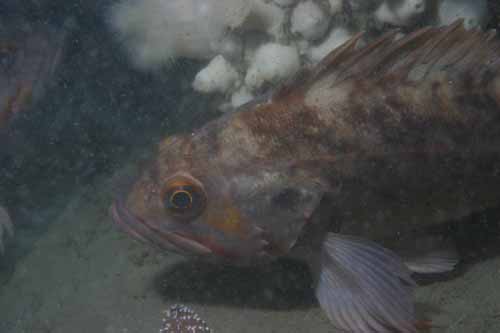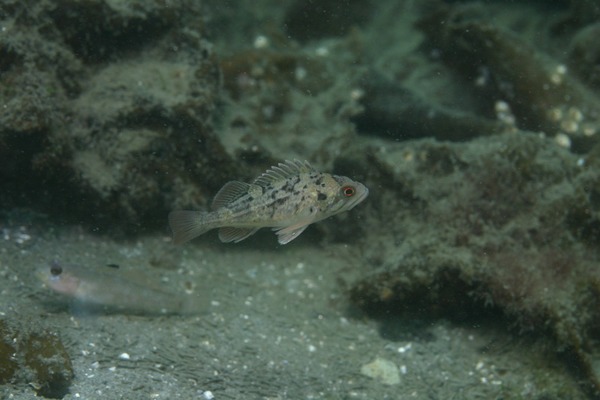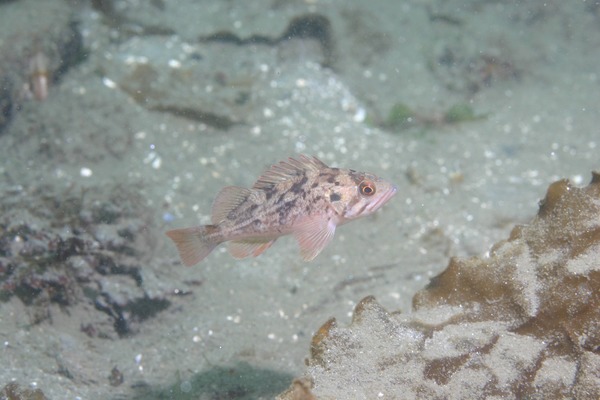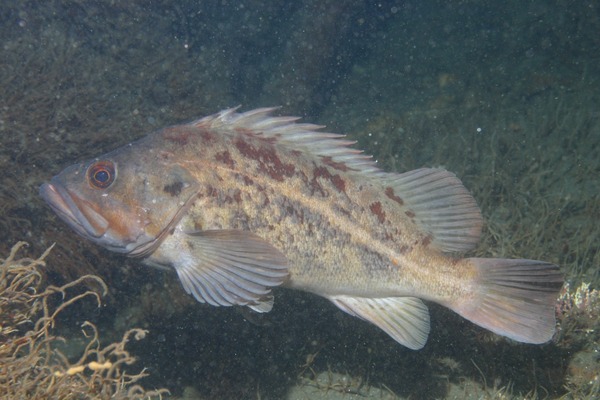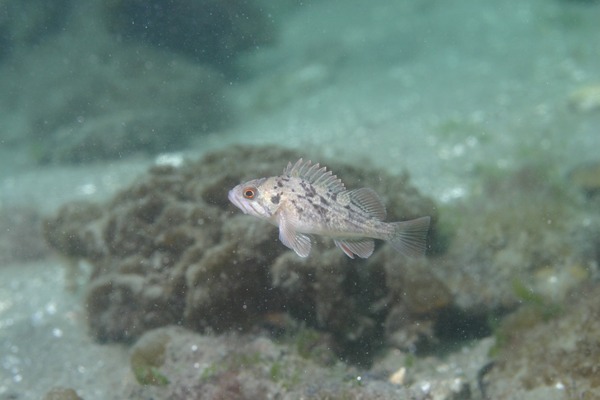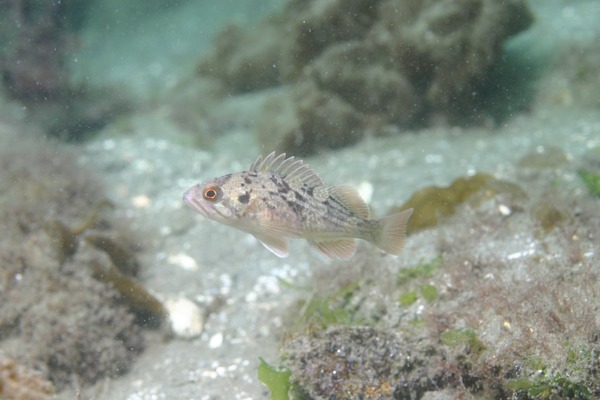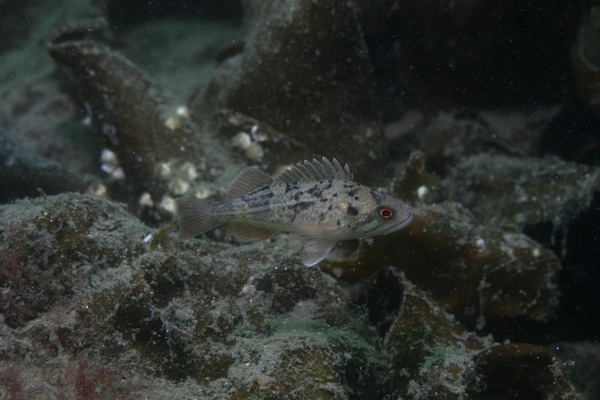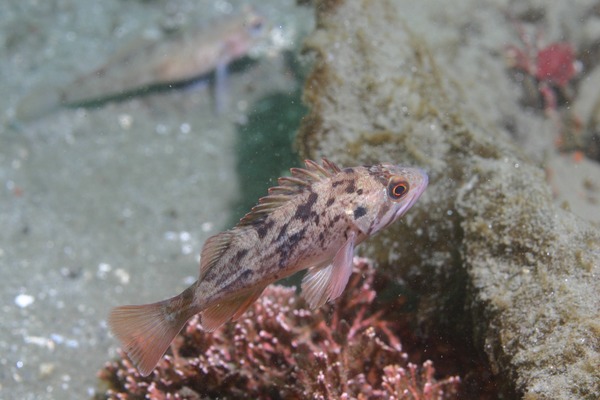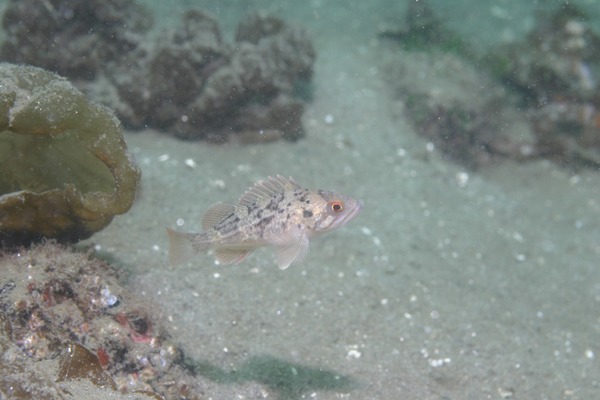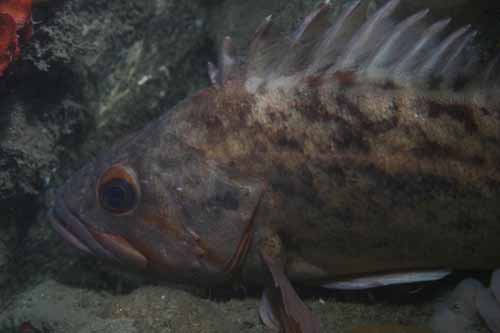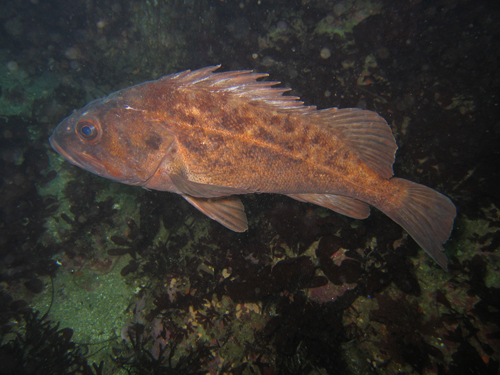
Brown rockfish
Sebastes auriculatus
Overview
Key Features:
Adults and YOY have a large dark blotch, usually black, at the rear tip of the gill cover and red-rimmed eyes.Similar Species:
Kelp rockfish (Sebastes atrovirens)Grass rockfish (Sebastes rastrelliger)
Primary Common Name:
Brown rockfishGeneral Grouping:
Bony fishesGeographic Range:
Alaska to southern Baja California, Mexico
Prince William Sound, Alaska to Bahia San Hippolito, Mexico. More common in the continental US from Bodega Bay to Bahia TortugasIntertidal Height:
to feet ( to meters)Subtidal Depth Range:
Minimum Depth: 0 meters or 0 feetMaximum Depth: 287 meters or 941 feet
Habitats:
bay (rocky shore), bay (sandy shore), protected rocky shore, protected sandy beachesNotes:
A generalist in terms of habitat use, it associates with both high and low rock reef, and soft bottoms as well as oil platforms, piers, and marinas.Abundance:
Relative Abundance:
Uncommon in central California kelp forests, more likely to be seen near piers and breakwaters.Species Description:
General:
Young of the year (YOY) brown rockfish have a red-rimmed eye, which is also common to grass rockfish. YOY of both brown and grass rockfish are superficially similar in terms of body coloration, but brown YOY have less saddling and darker, almost black splotches. The background body color is a gray-green and light. The pelvic fin has a leading white edge, apparent in YOY as small as 5 cm.Adult brown rockfish are very similar in appearance to kelp rockfish, and less so to grass rockfish. The head of the brown rockfish is pointed, similar to kelp rockfish and different from the large head of grass rockfish. They eyes were well set apart and red-rimmed; kelp rockfish are black and very large. The background color is light, kind of cream, and there are sparse dark blotches (dark brown, reddish brown, or almost black). The leading edge of the pelvic fin is white.
Distinctive Features:
YOY have a red-rimmed eye, similar to the grass rockfish YOY. In most individuals there is also a saddle just below the end of the dorsal spines and start of soft fin rays, which is found in both YOY and adults. This saddle is just the base background color, that is, darker pigment is found on either side and it is not white, per se.Size:
To 56 cm<BR> Up to 2.7 kgNatural History:
General:
Brown rockfish are not often seen in central California by divers, in large part due to where the fish live. Brown rockfish do not occur in kelp forests, but have been seen near the wharf pilings of Monterey Harbor and pipes near the Moss Landing Power Plant outfall and the old Kaiser intakes. These are not areas divers typically visit when diving Monterey Bay.Adults, which live up to 34 years, are mature by 20-30 cm TL and females release larvae from December to August.
Predator(s):
In the 20th century the most significant predator has been humans and there is still a live-fish fishery in California.Prey:
Brown rockfish feed on fishes and small crustaceans but also eat clams, worms, and even sea stars.Feeding Behavior:
CarnivoreSeasonal Behavior
April - September
Reproduction:
Young of the year (YOY) recruit from April to September.References
- Butler, J.L., M.S. Love, and T.E. Laidig. 2012. A guide to the rockfishes, thorny heads, and scorpionfishes of the northeast Pacific. University of California Press, Berkeley, CA. 185 p.
- Love, M. 1996. Probably more than you want to know about the fishes of the Pacific Coast. Really Big Press, Santa Barbara, CA. 381 p.
Related Information
Project Database
Photo Library
Click on an image below to view a larger version in the SIMoN Photo Library. You will also be able to view important information on each photo such as photographer, date, caption and more
